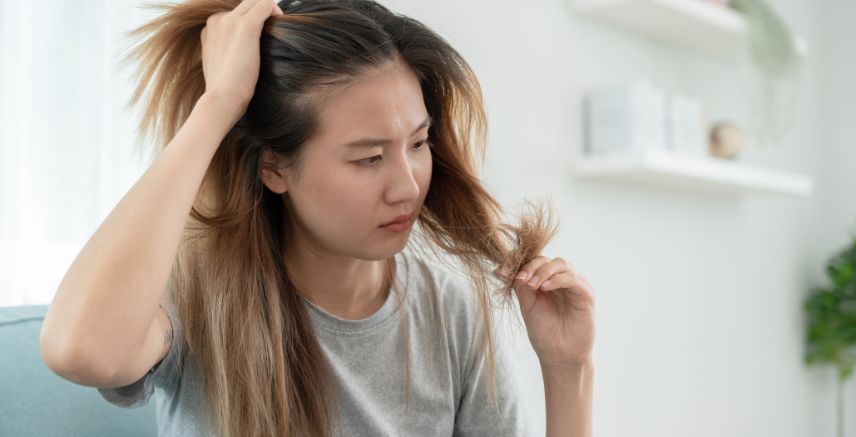Locks & Loss
Alopecia is the general term for hair loss on any part of your body. Alopecia affects people of all ages, genders and ethnicities and has various causes and symptoms. Alopecia is classified depending on the pattern, extent and mechanism of hair loss. There are numerous types of alopecia, with some of the most common types being alopecia areata, including patchy alopecia, alopecia totalis and alopecia universalis, androgenetic alopecia and telogen effluvium. In this article, we’ll discuss the signs and symptoms of these different types of alopecia.
Different Types of Alopecia
Alopecia areata has three main types, including:
- Patchy alopecia areata is the most common type and is characterized by coin-sized patches of hair on your scalp or other parts of your body.
- Alopecia totalis involves hair loss on all, or almost all, of your scalp.
- Alopecia universalis is rare and involves complete, or almost complete, hair loss on your scalp, face and body.
- numbered
- list
- for
- testing
Alopecia areata is an autoimmune condition in which your immune system mistakenly attacks your hair follicles, causing injury to your hair follicles. Damage to your hair follicles leads to hair loss.
Alopecia usually affects your hair, but you may also experience changes to your nails. Key things to know:
- Hair changes usually begin with sudden hair loss in round or oval patches on your scalp.
- Other areas of your body, including your beard, eyebrows and eyelashes, may also be affected.
- Eye irritation may occur if you lose your eyebrows or eyelashes.
- Tingling, itching or burning on the skin patches may occur right before your hair falls out.
- You may experience nail changes, including ridges and pitting. Nail changes are more common if you have extensive hair loss.
The progression of alopecia areata is difficult to predict and may follow this pattern:
- Hair may regrow within a few months and initially look grey or white, but it may regain its normal color over time.
- Further patches of hair loss develop.
- Small patches of hair loss join to make larger patches.
- Rarely, you may experience hair loss on your entire scalp (alopecia totalis).
- Rarely, progression to complete body hair loss (alopecia universalis).
Androgenetic Alopecia
Androgenetic alopecia, commonly called male or female pattern hair loss, is the most common type of hair loss. Androgenetic alopecia results from the action of dihydrotestosterone (DHT), which causes the hair follicles to produce smaller, shorter and lighter hair. As your body continues to produce DHT, your hair follicles shrink and eventually stop making hair.
Symptoms of male pattern hair loss may develop any time after puberty and progress throughout your life. Hair loss with androgenetic alopecia typically starts above your temples. It continues around the top and sides of your head, leaving a ring of hair along the bottom part of your scalp. You may eventually have complete hair loss on your scalp.
Symptoms of female pattern hair loss may begin any time after puberty, but it often occurs with aging. Symptoms of female pattern hair loss start with thinning along the part line that slowly spreads, but your hairline doesn’t usually recede. While female pattern hair loss can cause your hair to thin significantly, it doesn’t usually lead to baldness.
Telogen Effluvium
Telogen effluvium occurs when a large number of hair follicles on your scalp enter into the resting phase of the hair growth cycle (telogen), but the next phase of hair growth doesn’t begin, causing the hair on your scalp to fall out without new hair growth.
Symptoms of telogen effluvium usually start about three months after a medical event or condition, such as childbirth, surgery, fever or thyroid condition.
Vitamin deficiencies, including iron deficiency, and certain medications, such as blood thinners or birth control pills, can also trigger symptoms of telogen effluvium. If the medical event is temporary, such as a medication side effect, hair may start to grow back six months after discontinuing the medication.
Telogen effluvium is considered chronic if it persists for more than six months. You may lose 300 to 500 strands of hair daily, and your hair may appear thin, but complete hair loss is rare.
Summary
Most types of alopecia develop without unpredictably warning signs and progress. Hair may regrow on its own, but treatment is often necessary to restore normal hair growth. It’s important to speak to your doctor if you notice hair loss on your scalp or body. Treatment using a combination of lifestyle changes, medications and procedures may be necessary to prevent further hair loss and encourage new hair growth.
With alopecia comes thin hair, and what is there to do? Consider these low-maintenance hairstyles for seniors with thin hair.
Article Resources
- Alopecia Areata Types (National Alopecia Areata Foundation)
- Types of Hair Loss (NYU Langone Health)
- The 3 Most Common Types of Alopecia (Numan)
- Hair Loss Types: Alopecia Areata Signs and Symptoms (American Academy of Dermatology Association)
- What Are the Different Types of Alopecia? (Healthline)
- Understanding the Different Types of Alopecia (MyMed)
- Alopecia Areata (National Institute of Arthritis and Musculoskeletal And Skin Diseases)

